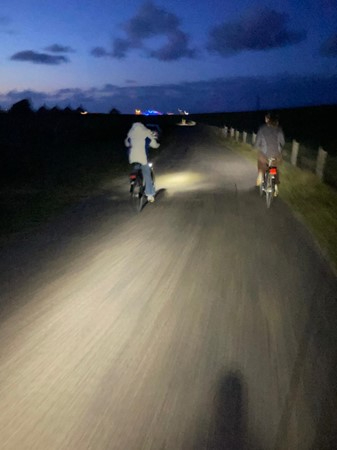17 July 2025
Sleeping aboard the historical ship 'Texelstroom'
Written by Ilse Winckers, MSc student Marine Sciences at Utrecht University
This summer the NIOZ course once again offered the unique opportunity to stay in a historical sailboat: ‘De Texelstroom’. Just a short distance from the NIOZ, 12 students (and 1 responsible Henko from NIOZ) wiggle themselves into cosy bunks, floating along bioluminescent algae and jellyfish. Many, many jellyfish. Harmless, cute jellies (the blue ones at least). Since the boat is quite narrow, it makes for moments squeezed together talking around the table or chilling on the deck, enjoying the sunlight and jumping in for a swim in the ocean at our doorstep.
Every morning, we get to wake up in the middle of Texel nature, the sun rising from the Wadden Sea, lighting up the NIOZ vessels. Makes for quite some beautiful sunsets, or stargazing!
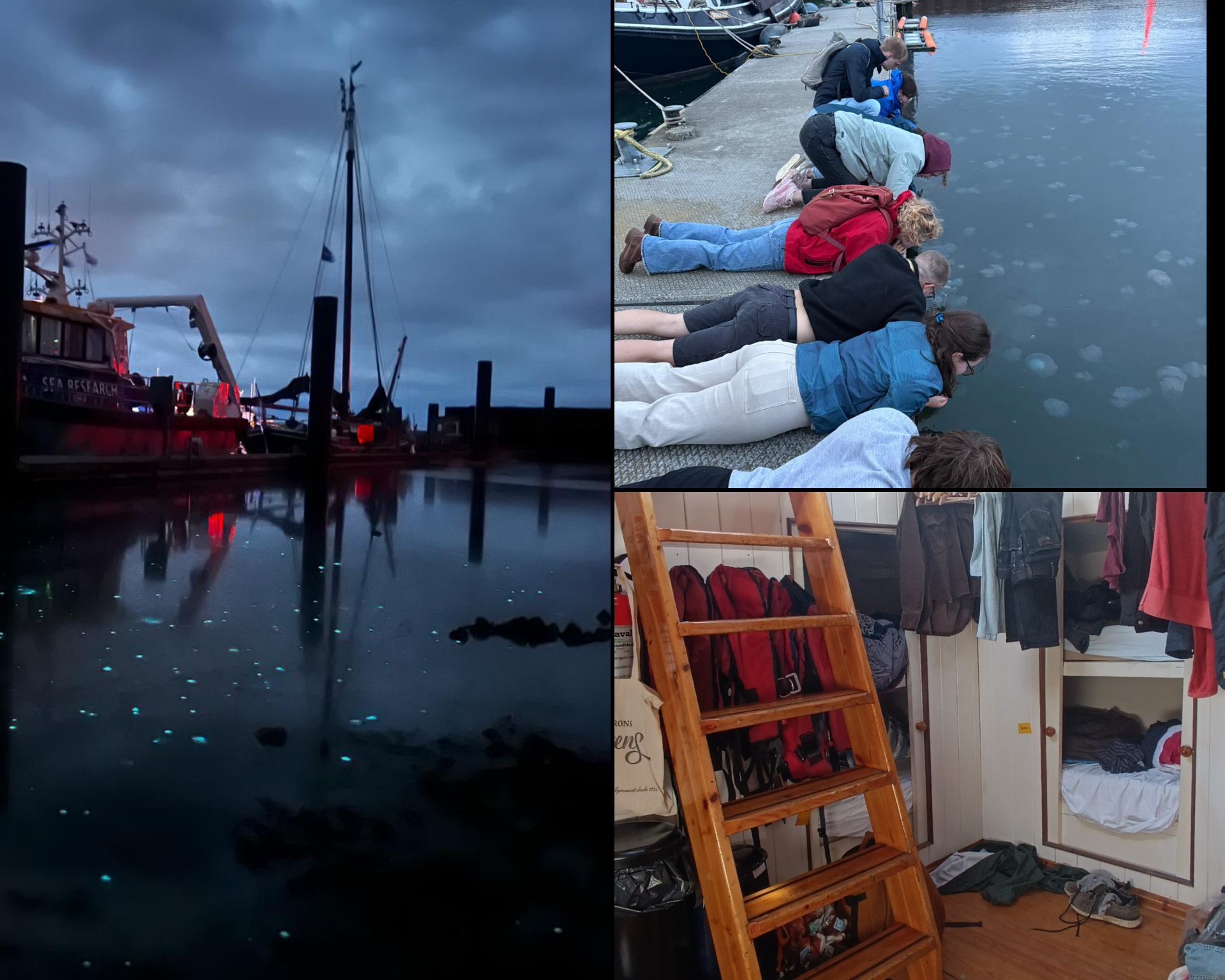
12 July 2025
Weekend excursion on a lovely sunny day
Written by Kim Grunschel, MSc student Engineering Geohazards at RWTH Aachen
On Saturday a geological excursion in the southwest of Texel was organized. The weather was perfect: sunny and warm. We started with biking to the supermarket to stock up on snacks for our picknick later in the day. Then we continued biking till we eventually got to the bunker at the Loodsmansduin were we had a scenic view over the different dune ridges. Around lunchtime we found a cozy spot in the dunes for a picnic were we had front-row seats to some seagull drama. There were even fluffy little chicks waddling around! Super cute. Throughout our bike ride and walk to the beach we came across a series of wooden poles. They mark where the shoreline used to be visualizing how dynamic and ever-changing this coastal environment is. Afterwards a few of us decided to stick around at the beach for a refreshing swim. All in all, it was the perfect combo of science, sun and sea.
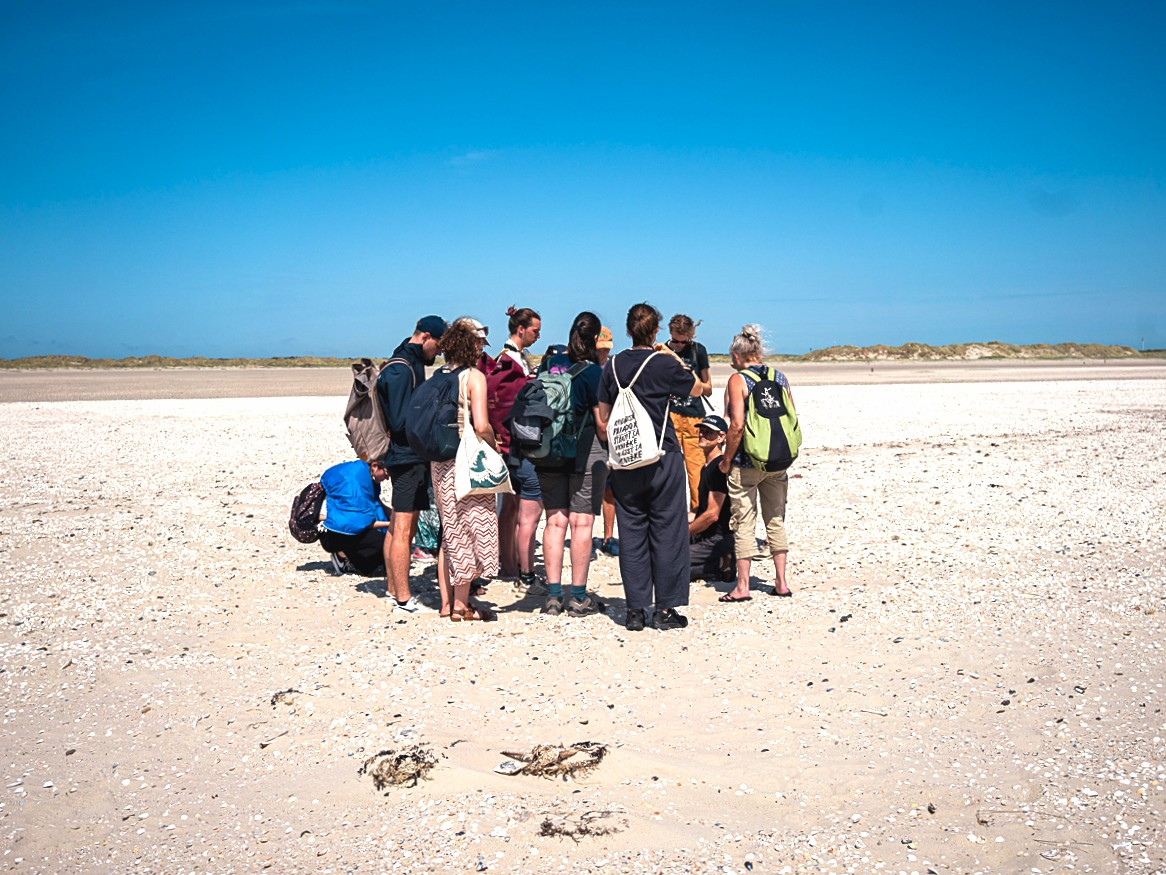
12 July 2025
Day at the beach
Written by Milena Mairamhof, MSc student Molecular Microbiology at Graz University of Technology, and Ayva Jacinto, BSc student Meteorology, Oceanography & Climate at the University of Aveiro
On this day, we finished the field trip earlier, and Levi knew a great spot to swim. We took our bikes and just took off. The countryside was stunning. The dunes and hills looked amazing – even though they were a little bit tough to bike, but we had enough motivation to pull through. After 20 minutes of listening to music while riding our bikes, we finally arrived. The beach was incredible. Very high beautiful waves. Just stunning. Immediately we ran into the sea. The water was surprisingly warm. We had so much fun trying to escape the kinda rough waves and not being pulled away by the currents. We dried in the sun before going back for dinner. Best afternoon ever.
Strand Paal 17 – you have to go there!!!

10 July 2025
The methane project – day one
Written by Karolin Schriever, MSc student Bioinformatics at the University of Hamburg, Rebecca Gorniak, MSc student Marine Biology at the University of Bremen, Anna Brisset, MSc student Marine Geosciences at the University of Bremen and Isabelle van Poeteren, MSc student Aquaculture and Marine Resource Management at Wageningen University
Our day started at 9 o’clock on the Wim Wolff research vessel. Gearing up with safety boots, helmets and our life jackets we felt very professional and more than ready to start our sampling process for the methane project. From NIOZ harbour we drove along a transect crossing the Marsdiep where we took several stops to take water samples with the CTD from various depths. It was very cool to be able to process the samples directly on the small laboratory on board! After the work was done, we enjoyed our lunch on deck in the sun and even got to see seals from the distance. After we thanked our kind captain and crew for having us and giving us some hands on experience we hopped off the boat to process the samples further in the lab.
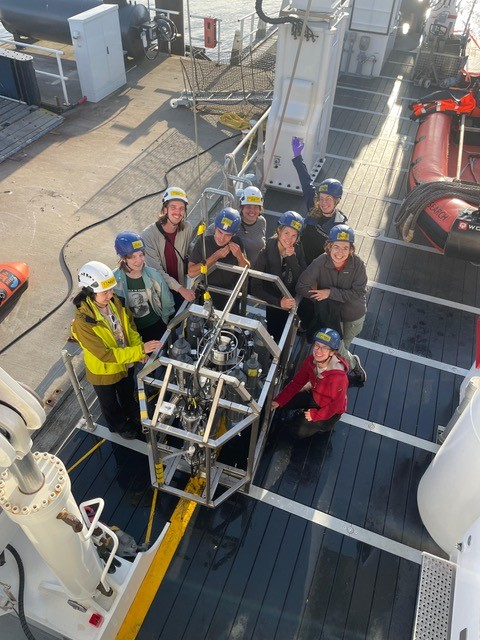
10 July 2025
Illuminating tidal flat trophic dynamics with stable isotopes
Written by Hannah Gliboff, MSc student Islands & Sustainability / Sustainable Fisheries Management at the RUG and University of Las Palmas of Gran Canaria
After a few days of lectures, introductions, and field work, we began our group projects. My group is analyzing stable isotopes in marine benthic organisms collected from the Mokbaai tidal flat on Wednesday. We collected 34 specimens in total, ranging from clams like Mya arenaria, pacific oysters (Magallana gigas), snails (Littorina littorea), and polychaetes like Alitta virens as well as algaes and sediment samples. In the lab, we took samples from each specimen and prepared them to be freeze dried and pulverized.
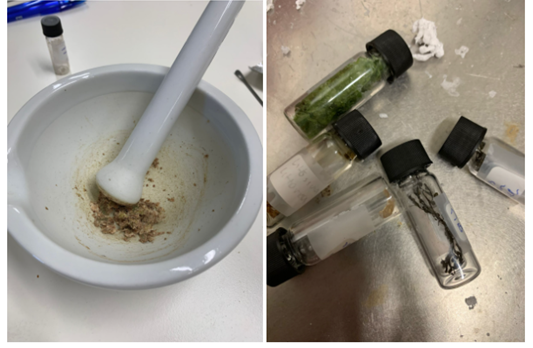
Today, we began the process of grinding the freeze dried samples, making a homogenous powder to be able to take consistent measurements of nitrogen and carbon content. Why? Because carbon and nitrogen both exist in different forms called isotopes. So-called heavy isotopes, like ¹³C and ¹⁵N, have an extra neutron and require slightly more energy to process, so organisms tend to preferentially use lighter isotopes during metabolic processes. This leads to isotopic fractionation, where the ratios of heavy to light isotopes as you move up the food chain. By analyzing the isotopes of organisms in an ecosystem, we can examine their trophic relationship to one another: who eats what, and how much?
Right now the isotope ratio mass spectrometer (IRMS) at the Benthos lab is processing our samples, and the data will be ready to analyze tomorrow. We’re excited to see the results! In the meantime, I’ve been enjoying the weather by running, biking, and scooping up jellyfish “zeepaddestoelen” that float by lazily.
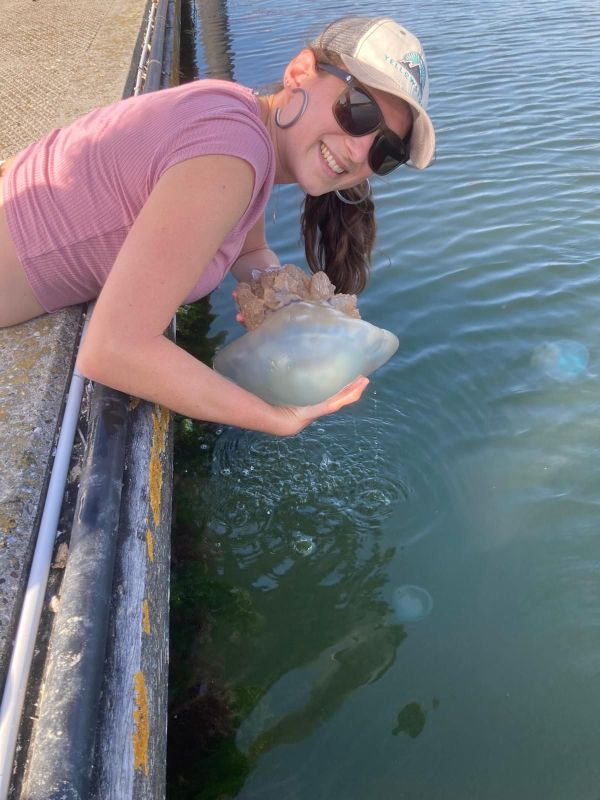
9 July 2025
Looking for animals in the Mokbaai
Written by Kim Grunschel, MSc student Engineering Geohazards at RWTH Aachen
With our rubber boots on we headed to the Mokbaai during low tide. We walked through the mudflats, our boots squelching and getting stuck at times. Our aim? To explore the hidden life underneath the surface of the mudflats, the benthic animals. We took cores of the mud, which we put in a sieve and with seawater we then flushed the mud away revealing the animals living in there. We collected many (more than 30) different species of animals including worms, cockles, tiny shrimps and seaweed. Afterwards we headed to the lab to sample them in order to prepare them for the stable isotope analysis that one of the groups is working on later in the week where they aim to unravel the Wadden Sea food web.
8 July 2025
Fun fieldtrip at the saltmarsh
Written by Milena Mairamhof, MSc student Molecular Microbiology at Graz University of Technology, and Ayva Jacinto, BSc student Meteorology, Oceanography & Climate at the University of Aveiro
Half of the participants went to the Slufter - a huge saltmarsh with plants like the Salicornia and water intrusions. The landscape was wonderful! We all walked from the dunes towards the sea and even saw some horses. There were a lot of beautiful shells everywhere. On our way we collected sediment (sand) next to different Salicornia patches, algae and sea water samples. In the pictures you can see Milena trying to collect dry sand to then analyse for oxalotrophic bacteria present near Salicornia plants. Everybody was really nice and we had a lot of fun digging with spoons.

8 and 9 July 2025
Box coring and CTD
Written by Maximiliane Scheller, MSc student Biology at the Technical University Munich
At day two and three we got the chance to go on the research vessel Wim Wolff! With safety boots, life jackets and helmets we were allowed to explore the boat. Starting at the first waypoint we did put the boxcorer in the water to sample some sediment from the Wadden Sea´s floor.
The ship’s crew did a nice job to arrange the heavy instruments, we needed to get to the ground. A crane was lifting the boxcorer from the ship in the water. The boxcorer was brought down with a rope.
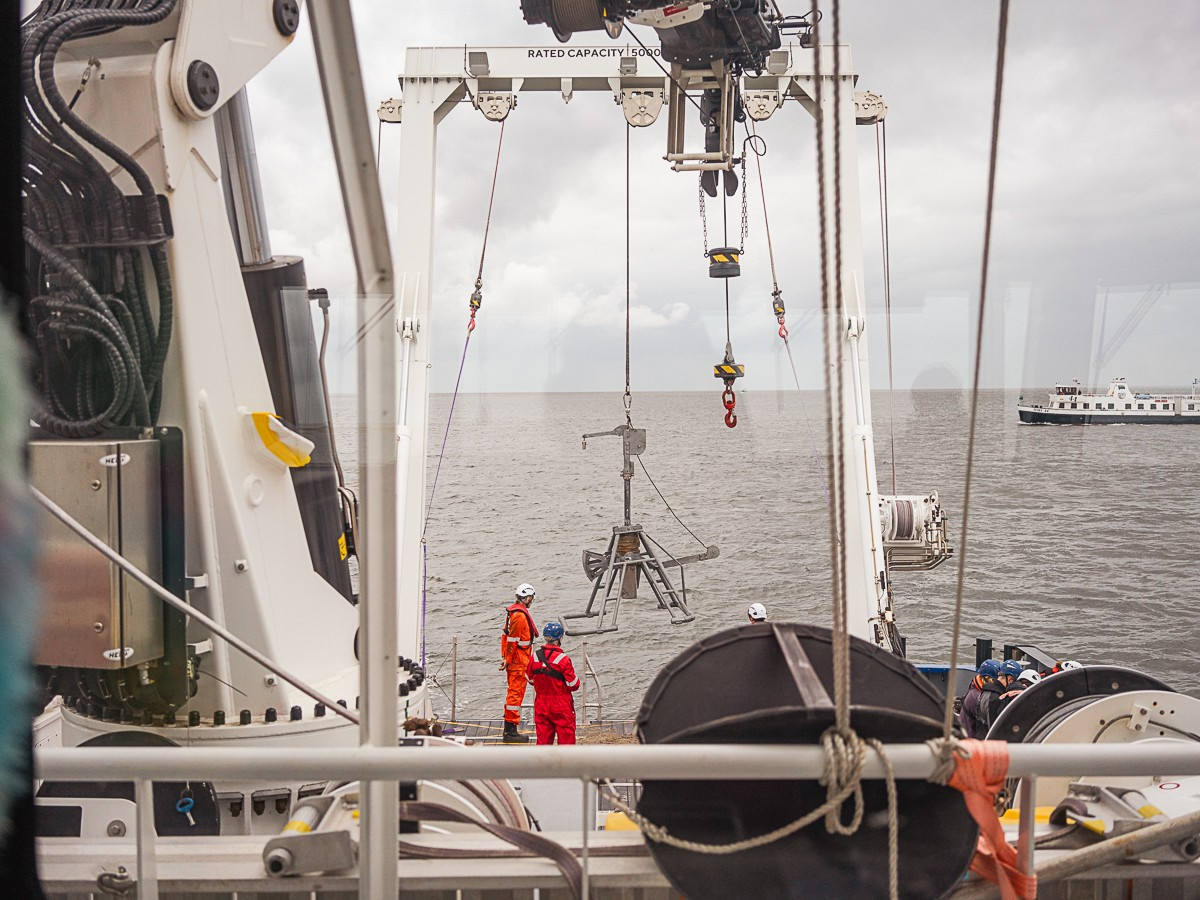
Ayva and I were pressing the buttons on a computer on the bridge to gather the location, depth and probe names to document our scientific investigations from the sediment sample. We could also talk to the captain Maarten Stenneberg about the technical instruments, which I find really fascinating.
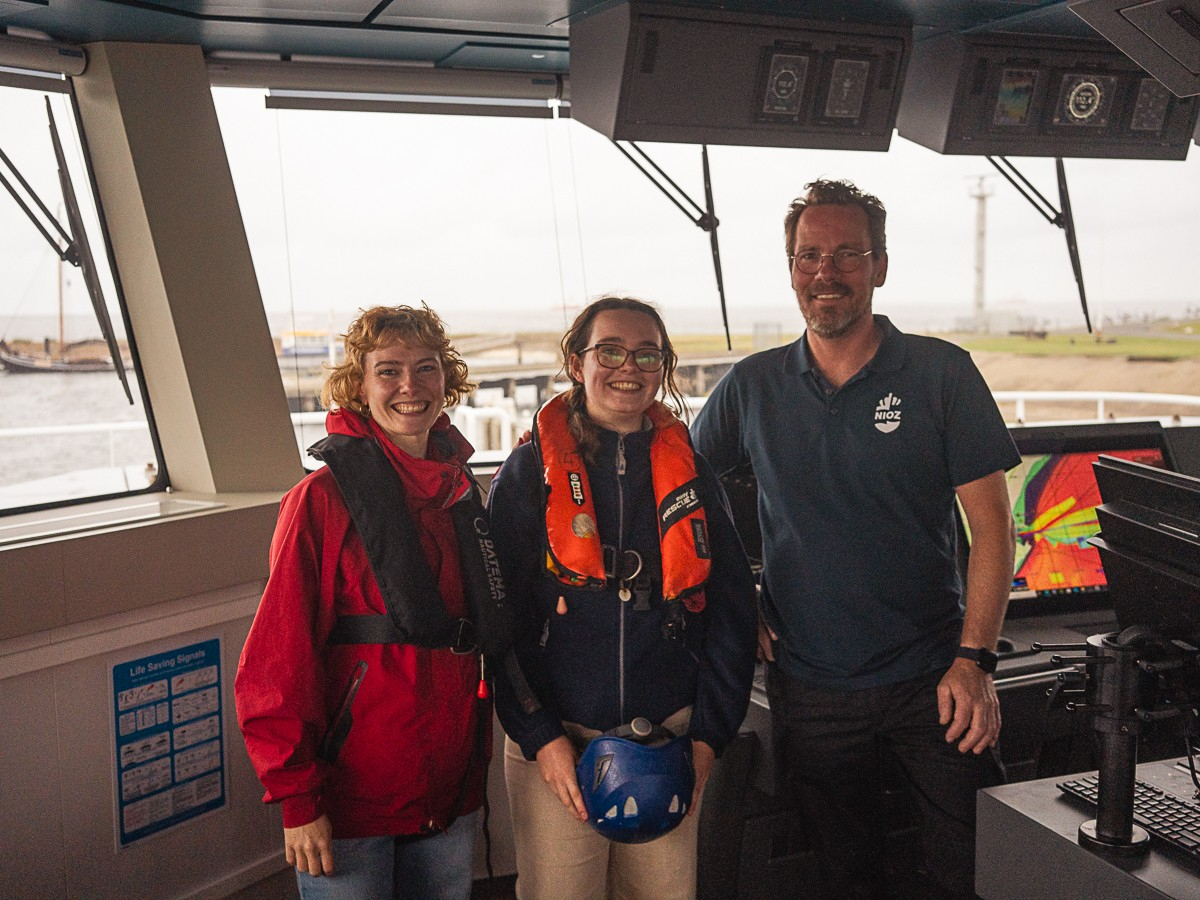
After the boxcorer was brought back out of the water, the students started to estimate its surface composition. Is it made out of: clay, sand, mud? Then a very exciting part starts. The sediment chunks were rinsed with seawater to investigate the living fauna in it.
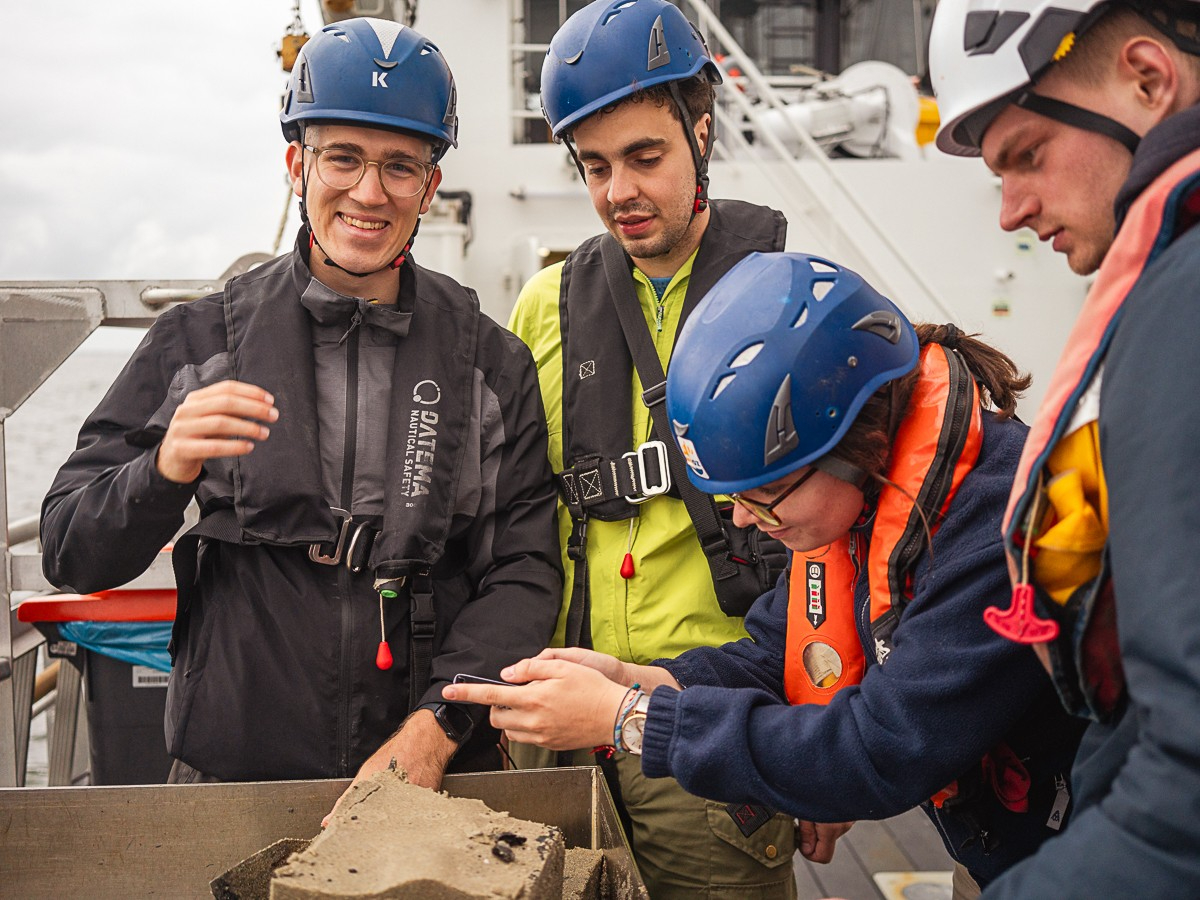
Later we took water samples with a CTD to filter out the microorganisms living in the water column. We had to open the tubes filled with sea water to tap off some of it for the filter apparat, which is installed in the wet lab on board of the vessel.
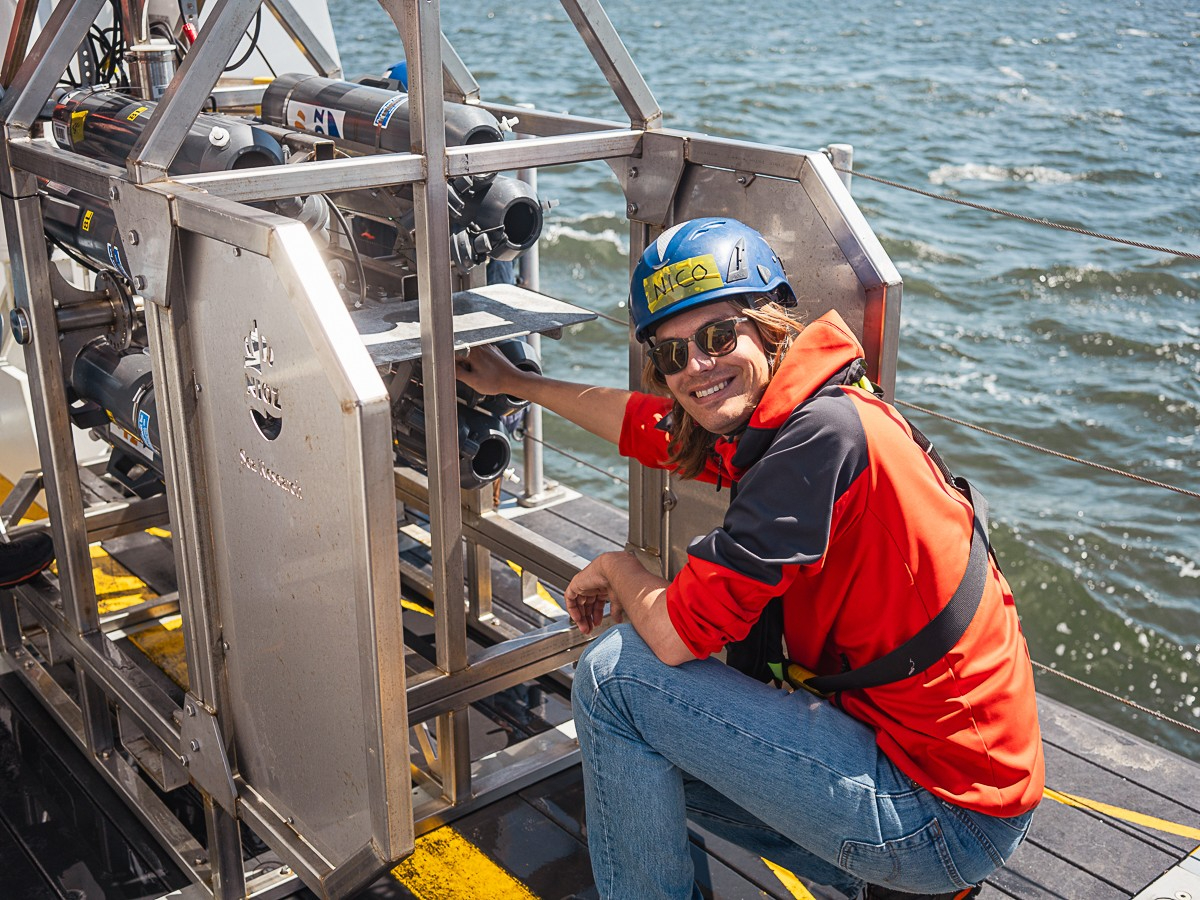
All in all, it was a great introduction to get to know how scientific research is conducted on a research vessel. We had a helpful, kind crew and lots of fun!
7 July 2025
Sea sparkle!
Written by Meike Hartog, MSc student Bio-Inspired Innovation at Utrecht University
After breakfast, we head straight to the introductory lectures covering all aspects of marine life and the Wadden Sea. Due to the wide range of academic backgrounds among the students, a crash course on various marine topics was given. As a biologist myself, I gained fascinating new insights into different marine disciplines. Thanks to the nice weather, the project presentations took place in the harbour. Six different projects with a broad range of topics were introduced, from modelling tidal waves to studying the microfauna found in sediments. Something to suit everyone’s interests. In addition to being outdoors, it was impressive to see the research vessel we’ll be working on and visiting in the coming days. Although everyone was tired in the evening, most students pushed themselves to stay awake in case the sea sparkle reappeared. Once we indeed got the signal, we rushed to the harbour. And yes, it was absolutely magical, and experience to never forget.
